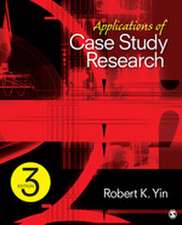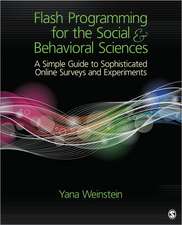Teaching Qualitative Research
Autor Rosalind E. Hurworthen Limba Engleză Hardback – 14 feb 2008
| Toate formatele și edițiile | Preț | Express |
|---|---|---|
| Paperback (1) | 404.00 lei 38-44 zile | |
| Brill – 31 dec 2007 | 404.00 lei 38-44 zile | |
| Hardback (1) | 792.98 lei 38-44 zile | |
| Sense Publishers – 14 feb 2008 | 792.98 lei 38-44 zile |
Preț: 792.98 lei
Preț vechi: 1029.84 lei
-23% Nou
Puncte Express: 1189
Preț estimativ în valută:
151.74€ • 156.54$ • 126.63£
151.74€ • 156.54$ • 126.63£
Carte tipărită la comandă
Livrare economică 22-28 martie
Preluare comenzi: 021 569.72.76
Specificații
ISBN-13: 9789087902049
ISBN-10: 9087902042
Pagini: 292
Dimensiuni: 156 x 234 x 18 mm
Greutate: 0.59 kg
Editura: Sense Publishers
Locul publicării:Netherlands
ISBN-10: 9087902042
Pagini: 292
Dimensiuni: 156 x 234 x 18 mm
Greutate: 0.59 kg
Editura: Sense Publishers
Locul publicării:Netherlands
Descriere
Descriere de la o altă ediție sau format:
Over the past two decades there has been a plethora of book for students about how to tackle Qualitative Research (QR), but absolutely nothing on how to teach it! This book attempts to redress the imbalance by presenting a history of what is known about QR teaching, as well as to bring alive current QR teaching and learning through a set of Australian and British case studies. Courses visited were located within a variety of disciplines (including Education, Sociology, Anthropology, Nursing, Psychology, Communications and Evaluation), were taught by both experienced and inexperienced lecturers, were either presented alone or in pairs, took place in a range of institutions. lasted from seven weeks to a year and involved from 15 to over 100 students.
It emerged, however that, no matter what the context, several common issues were raised such as: Should you teach theory, practice or both? How do you determine a curriculum for a QR course? What is the best way to manage student projects? How should students of QR be assessed? In what ways can the constraints of University structures be confronted? and How can lecturer deficiencies in training and experience be overcome? To answer such questions, Professor Hurworth draws deftly from personal observations and rich conversations with both lecturers and students from all the courses described. As a result many practical ideas for moving the teaching and learning of QR forward, are suggested.
Over the past two decades there has been a plethora of book for students about how to tackle Qualitative Research (QR), but absolutely nothing on how to teach it! This book attempts to redress the imbalance by presenting a history of what is known about QR teaching, as well as to bring alive current QR teaching and learning through a set of Australian and British case studies. Courses visited were located within a variety of disciplines (including Education, Sociology, Anthropology, Nursing, Psychology, Communications and Evaluation), were taught by both experienced and inexperienced lecturers, were either presented alone or in pairs, took place in a range of institutions. lasted from seven weeks to a year and involved from 15 to over 100 students.
It emerged, however that, no matter what the context, several common issues were raised such as: Should you teach theory, practice or both? How do you determine a curriculum for a QR course? What is the best way to manage student projects? How should students of QR be assessed? In what ways can the constraints of University structures be confronted? and How can lecturer deficiencies in training and experience be overcome? To answer such questions, Professor Hurworth draws deftly from personal observations and rich conversations with both lecturers and students from all the courses described. As a result many practical ideas for moving the teaching and learning of QR forward, are suggested.












